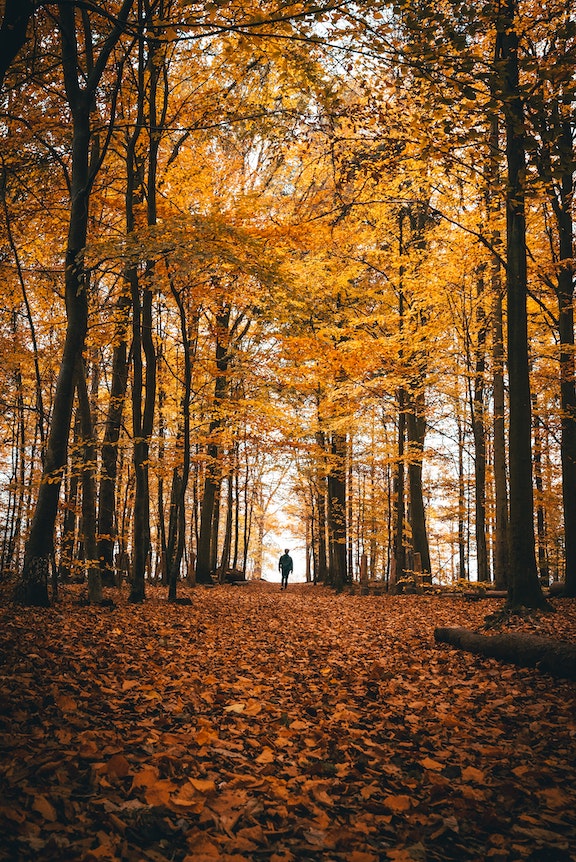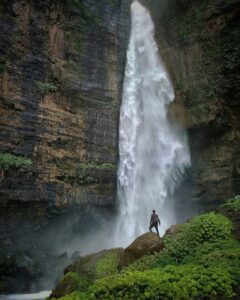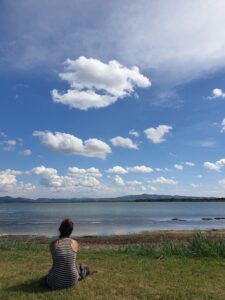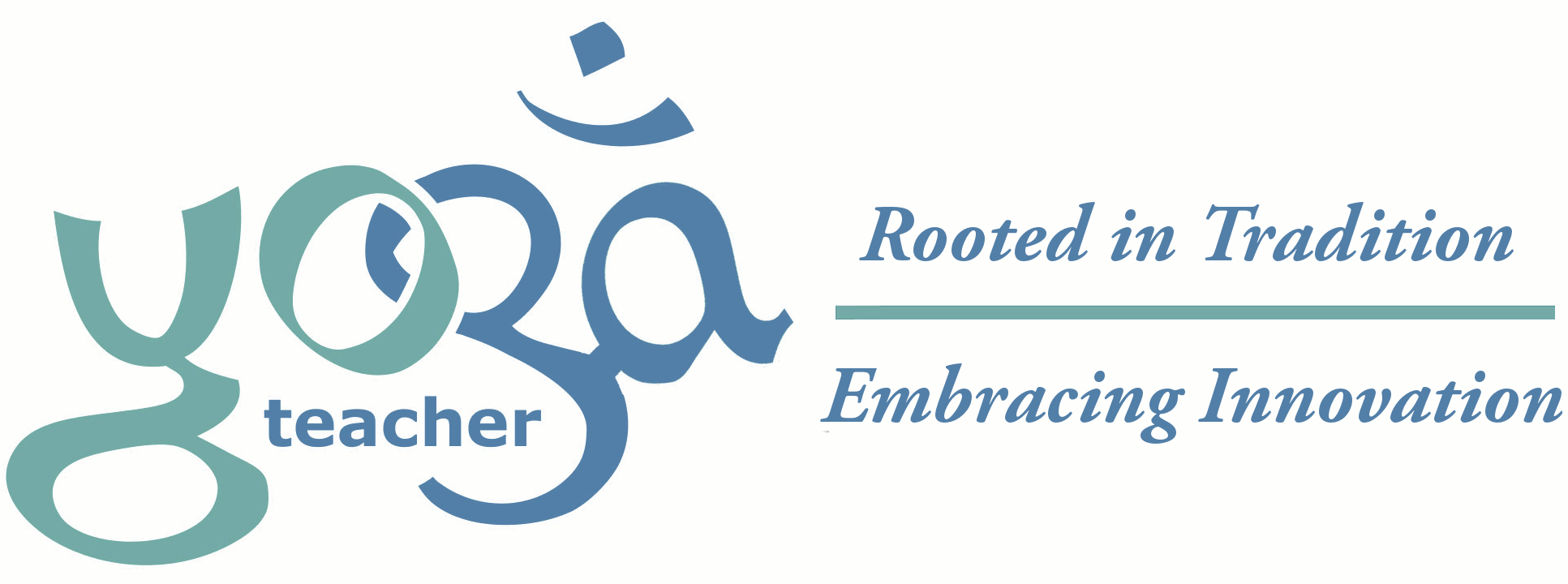 Our nervous system evolved to process vast amounts of information from the senses, especially the eyes. Our ancestors lived more closely with nature, spending most of their time outdoors. A walk in the woods saturates the brain with complexity – the fractal structure of each tree, branches, leaves, mosses, lichens, shadows and highlights. When A breeze stirs the forest, it comes alive with sounds and movement. It is impossible to notice everything. Most of the details are felt rather than seen and remembered. But just because we are not conscious of every detail, does not mean we do not appreciate the experience.
Our nervous system evolved to process vast amounts of information from the senses, especially the eyes. Our ancestors lived more closely with nature, spending most of their time outdoors. A walk in the woods saturates the brain with complexity – the fractal structure of each tree, branches, leaves, mosses, lichens, shadows and highlights. When A breeze stirs the forest, it comes alive with sounds and movement. It is impossible to notice everything. Most of the details are felt rather than seen and remembered. But just because we are not conscious of every detail, does not mean we do not appreciate the experience.
In the same way that a greyhound needs to run, or a border collie to herd sheep, humans need to saturate the senses with the infinite complexity of the natural world. The more we turn away from the natural world and surround ourselves with the straight lines, walls, and the predictable homogeneity of modern digital life, the less happy we become.
My favorite form of meditation is called Detached Observation. There are many variations, but they all share a simple and powerful algorithm…
1 Pay Attention!
2 Do not Judge!
3 Do not interfere!
 In the classical practice of Detached Observation, we use this approach to observe our inner dialogue. However, we can also choose to follow this practice to focus on our breath, posture, walking, or eating. This same recipe can be found in communication theory. In seeking to understand the other person we learn first to listen – paying attention, not judging, and not steering the conversation.
In the classical practice of Detached Observation, we use this approach to observe our inner dialogue. However, we can also choose to follow this practice to focus on our breath, posture, walking, or eating. This same recipe can be found in communication theory. In seeking to understand the other person we learn first to listen – paying attention, not judging, and not steering the conversation.
My favorite variation is to watch nature with Detached Observation. This is also the easiest for beginning meditators because what we are watching, nature, is beyond our control. This makes it easier to watch without judging or wanting to interfere.
You have probably already practiced detached observation without realizing it. Watching a sunset is a common experience of spontaneous meditation. I also love watching moving water: ocean waves; rapids; waterfalls; or rain. All provide a wonderfully complex sensory environment that can be used as the target of our meditation. If we are lucky, we might occasionally lose ourselves and identify with the witness of the experience.
 There are many other natural targets that we can use. Gazing at fire is a favorite past-time since pre-historic times. I have fond memories of laying on my back to stare up at the stars at night, or watching clouds during the day. In each of these meditations we learn to pay attention without judgment and without the desire to control. We practice identifying with the internal witness. Eventually we might even experience a merging of that which witnesses and that which is witnessed, and experience oneness.
There are many other natural targets that we can use. Gazing at fire is a favorite past-time since pre-historic times. I have fond memories of laying on my back to stare up at the stars at night, or watching clouds during the day. In each of these meditations we learn to pay attention without judgment and without the desire to control. We practice identifying with the internal witness. Eventually we might even experience a merging of that which witnesses and that which is witnessed, and experience oneness.
Detached Observation is one of the most effective techniques for slowing down your brain waves past alpha and down into the theta range. This is the frequency at which we experience the most profound creativity and insights.
One the most famous stories of spontaneous insight came from such an experience. In 1857, Friedrich August Kekule who was staring into the embers of a fire and daydreaming about a snake when he solved the structure of benzene (the carbon ring which is the foundation upon which organic chemistry is built).
 My personal favorite was Mitchell Feigenbaum. At Los Alamos he was often called the wandering genius. When he was needed, his colleagues knew to look for him in nature. His two favorite past times were watching fast moving streams and watching clouds. Someone passing by could be forgiven for thinking he was wasting time. But it was these periods spent lost in reverie, that Feigenbaum credited for his most profound insights into physics, chaos theory and complexity theory.
My personal favorite was Mitchell Feigenbaum. At Los Alamos he was often called the wandering genius. When he was needed, his colleagues knew to look for him in nature. His two favorite past times were watching fast moving streams and watching clouds. Someone passing by could be forgiven for thinking he was wasting time. But it was these periods spent lost in reverie, that Feigenbaum credited for his most profound insights into physics, chaos theory and complexity theory.
In this week’s yoga video we will explore detached observation of the breath as a form of meditation. Then we will use it as a foundation for deeper and more complex breathing practices and Pranayama. Because it is so easy to interfere with our own breathing, this is a little more difficult to master than external targets in nature, but the payoff is significant, not just in terms of improving how you breath, but also in terms of feeling more connected to self.





